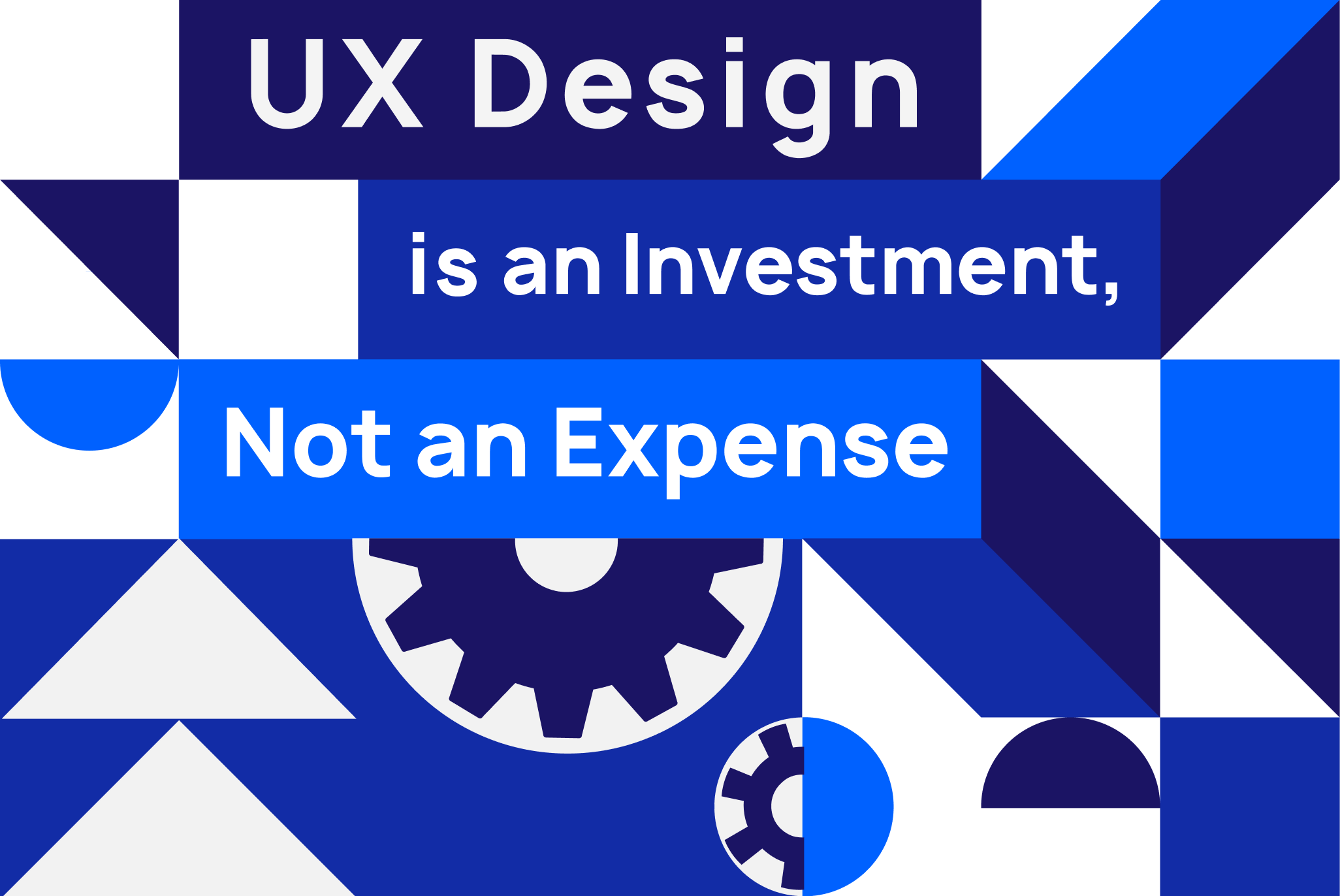ROI of UX: The Power of a Carefully Considered User Experience
11.07.2022To understand the ROI of UX, let’s start with a story many of us are familiar with.
In 2007, Blackberry phones were at their peak. The company covered 10 percent of smartphone market shares and was expected to double that in the coming years. In the same year, Apple released the first ever iPhone, and it swiftly began to dominate the smartphone market. How were they able to achieve this level of market success in just a few years?
Apple’s success can be traced back to a critical error by Research in Motion (RIM), the company behind Blackberry products. After reviewing the phone Apple planned on using to compete with Blackberry, RIM concluded that iPhones were not a threat; as they offered no security, their batteries drained quickly, and their keyboards were lousy. What RIM failed to consider was the iPhone’s substantially better user experience (UX), focusing on a more elegant design and a powerful ( for the time being) camera.
Apple is an unbeatable brand today, and they have their careful consideration of UX to thank for that. The company is now one of the biggest examples of how crucial it is to understand the ROI of UX. Real world proof of how a sharp focus on user experience design can help secure higher ROIs in the long run.
UX ROI is all About Money
A common myth surrounding ROIs is that money is the only valuable return. Though money is a crucial and tangible part of ROI, it is not the only important aspect.
A software development company also invests two irreplaceable assets in a project: time and personal investment. If both of these assets are invested in the UX of a project, the results could yield time-saving processes, better brand loyalty, and reduced usability errors.
Satisfied customers don’t just give good reviews; they become a source of referrals and help build a positive brand impression in the market. Your business goals shouldn’t be limited to short term monetary gains. Instead, investing in goals focused on better user experiences and acquiring irreplaceable customer mindshare leads to long-term revenue growth that continues to build on itself. Such goals become achievable when a company understands the ROI of UX and is ready to put in the effort.
How to Measure the ROI of UX

Measuring the ROI of UX requires understanding some internal and external processes. Below is a list of KPIs that can help companies determine a rough estimate of the ROI of UX research and implementation.
1. Higher Conversion Rate - Higher ROI of UX
Intentional UX encourages prospects to interact with a brand’s products, leading to a predetermined action. Whether conversion amounts to a subscription, information sharing, or direct action, carefully considered UX builds positive first impressions of a brand.
Keeping the quality of the UX high and consistent throughout helps boost conversion rates.
2. Need for Customer Support
Countless hours and budgets are wasted on customer support that could be minimized through proper UX research and implementation. Only through the implementation of these processes can a company create relevant platforms driven by user needs.
The UX lowers necessary customer support levels and presents the possibility to utilize the manpower involved in other growth opportunities in the company.
3. Development Waste
Thorough UX research at the beginning of the design process helps minimize the risk of error in the launch of your first minimum viable product (MVP). Through UX research, MVP’s require less adjustments and shrink the margin of error when compared to projects that don’t consider their user experience.
Now adjustments are never totally avoidable. During long-running, large projects of real complexity, some elements will have to be adjusted regardless of the preparation put in. UX consideration is, however, the simplest way to reduce development waste and keep projects running smoothly.
4. Employee Satisfaction - The Best ROI of UX
Great UX helps companies create interactions and workflows that optimize collaboration in the businesses. Companies gain improved morale, reduced turnover costs, and optimized operations through the process of streamlining convoluted and complex internal systems.
Systems with poorly developed UX become potholes in the development process that developers try to avoid, resulting in potential data islands, data cleanups, and other logistical nightmares. When a system works well, employees are more likely to buy into it. It becomes part of a virtual cycle where teams are invested in making useful systems even more efficient and practical, as opposed to avoiding engagement with it at all.
5. Risk
Risk decreases greatly when thorough UX research is a part of the product’s development. Engaging with UX research makes identifying potential risks significantly easier, opening the door for streamlined implementation. Research helps discover the possibilities of design that the target audience prefers, refining the whole risk management process into a simpler pipeline based on those insights.
What Methods can Improve ROI of UX?

There are different UX methods used to create coherence in the internal development teams and deliver enhanced products. There are three methods of note:
1. Wireframe
Wireframes are outlines of what a software product will look like after development. They include all the interface elements and their placement on the platform, creating a clear image of what needs to be built.
They allow teams to quickly and effectively understand a design and its particular needs. Wireframes help create a rapid prototype and hasten the decision-making process.
Wireframes deliver:
-
50% more accurate estimates for building time and cost.
-
80% reduced requests for clarification by the development team.
-
25% reduced rework and bug fixing post-launch.
Wireframes can be quickly shared with development teams. Whether it’s UX designers, developers, or BAs, wireframes provide any member of the team the chance to discuss and make decisions before a prototype gets passed to production. Wireframing in many companies helps save time, and it is the first step towards building a UX-driven product.
“Nothing gets people’s attention better than a picture of what people are talking about.”
2. Personas
Personas are fictional “characters” created using real user data. Building personas helps UX designers understand and empathize with individual archetypal users whose goals and characteristics represent a larger group’s needs.
UX designers utilize personas to empathize with a particular user, to really step into their shoes and think through how they would use the product.
Personas in Marketing vs Development
In marketing, personas provide direction for targeted sales strategies. They help get leads inside a sales funnel and complete the conversion process. Personas answer the question, “how will we market this product to our desired audience?”
Development personas are focused differently; for them, it is all about the user experience analysis. Development personas ask the question, “How can we ensure that this product is available and easy for them to use?”
Building and analyzing personas is something that is not conditional. You need personas to create efficient software.
While working for the same cause, engineers and designers can sometimes differ in their opinions. While engineers tend to be more focused towards the edge cases that can break the software, designers focus on the common cases for the utilization of the product.
Both scenarios should be considered while building a product. When clashes of thought occur between these perspectives, solutions can be found by revisiting the personas, wireframes, and other UX-related data collected during the research to keep goals aligned.

3. Usability Testing
The practice of evaluating a design with a group of representative users is a crucial method for increasing the ROI of UX. User testing involves studying users as they attempt to complete tasks on different types of designs for a product. Such tests help save money upfront by determining if the product features are a good fit for a particular user segment.
Usability tests are crucial for in-process or launched products, as they help gather data and feedback from the user. A product has to evolve with changing market demands, and real-time usability tests make space for a product’s betterment. Getting user feedback helps save money in the future and can be used to address and correct errors while building a platform designed with user comfort in mind.
The Negative Consequences of Not Investing in UX Designs

According to an open report by Amazon AWS:
-
The number of projects abandoned because they do not meet the original purpose is up to 15%, which equates to $150 billion worldwide.
-
The time developers spend reworking a project with avoidable faults is 50%.
-
The cost of fixing an error after development is 100X that of fixing it before development.
-
Three out of the twelve reasons projects fail are attributed to user experience failures.
All the above data validates the need to focus on UX and strategic business analysis before building a product.
UX Design Is An Investment, Not An Expense

The ROI of UX can be summed up in four points.
-
UX design is valuable because of its capability to engage, influence, and motivate.
-
Effective UX design allows internal teams to work more efficiently when building a product.
-
Investing in well-considered UX strategy reduces development costs, as UX research helps resolve problems in the design phase rather than after an expensive development process.
-
If the design is well crafted, it will be reflected in the overall experience of the product.
Many clients come into digital initiatives not having gone through the cycle of a major digital project, and they may think it’s a one-and-done process. One of the responsibilities of a company like DOOR3 is to educate our clients about the long-term ROI of UX research. One end result of such research is learning to build better, an invaluable resource for companies looking to continually improve their product development timelines and success rates.
Short term ROIs may get you out of a pinch, but it’s the long term ones that provide the foundation for which a solid business can stand on. Interested in learning more about the ROI of UX? Set up a brief call with one of our consultants so we can guide you through the process. Contact us today!



